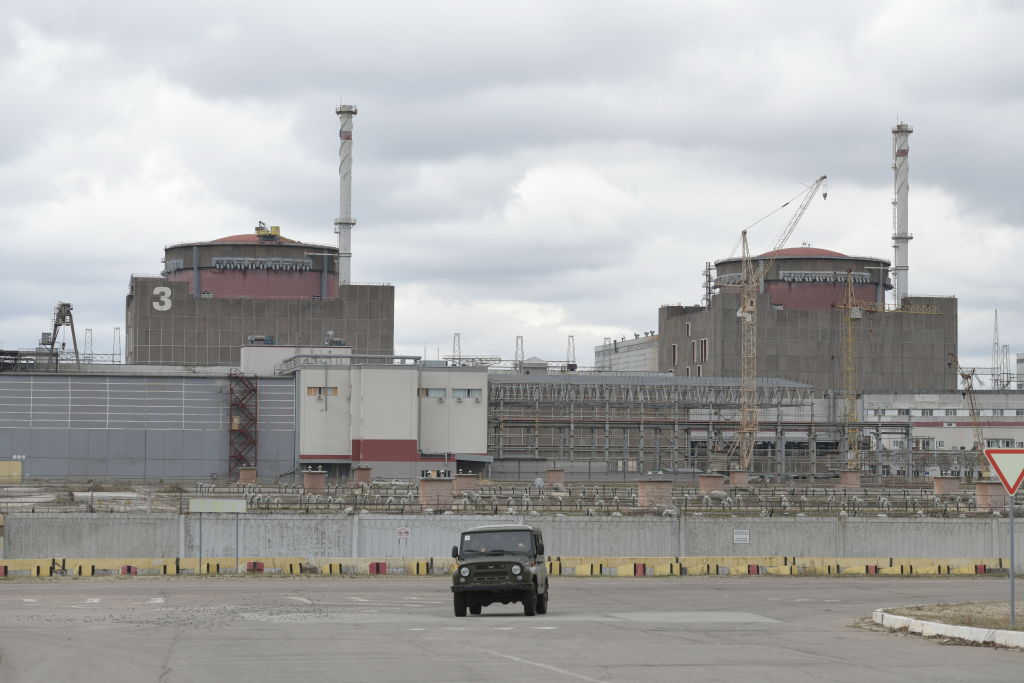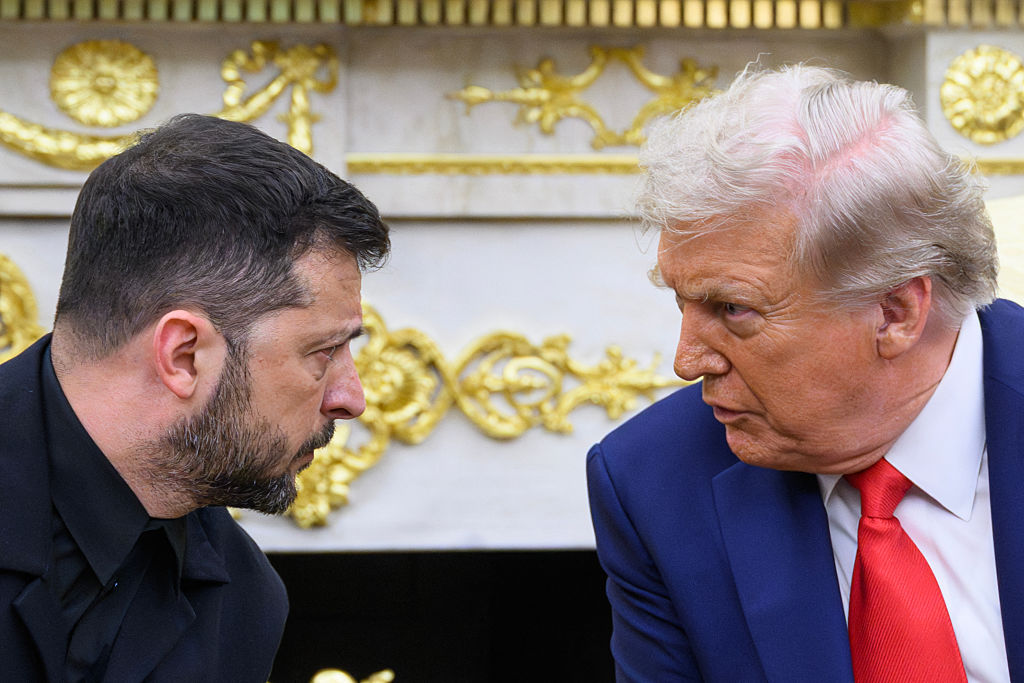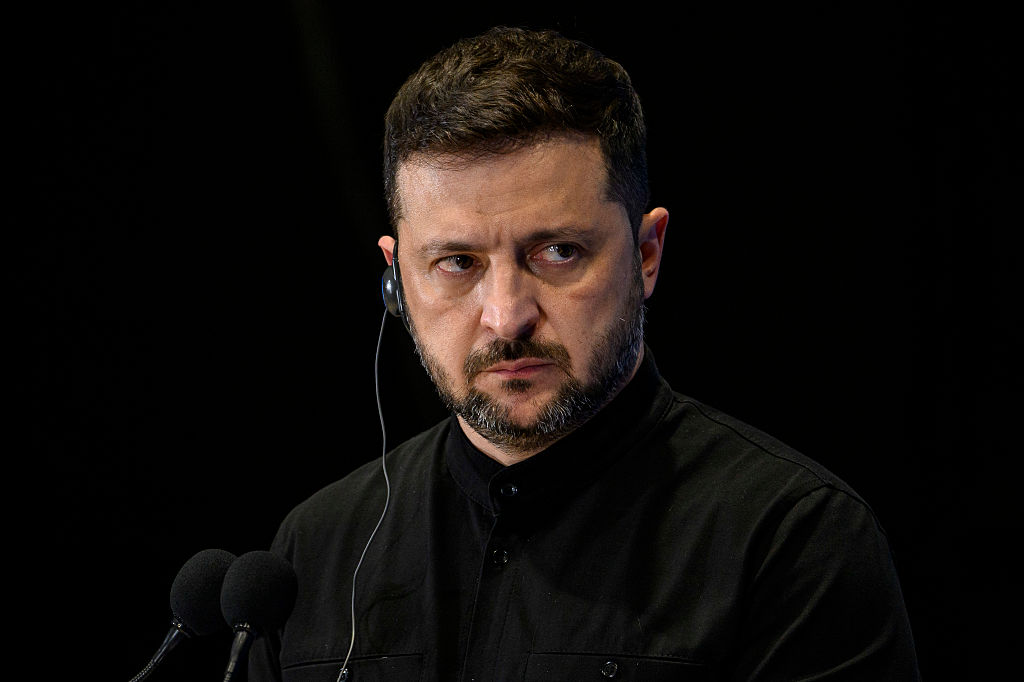Earlier this year, a bright light streaked through the night sky above Inner Mongolia. It was not an asteroid. The US Center for Strategic and International Studies, which released the footage, reported that it was China’s testing of a missile traveling at approximately 6,900 miles per hour.
When China’s DF-27 hypersonic missile was first revealed in 2021, the US military was shaken. General Mark Milley, then chairman of the Joint Chiefs of Staff, described it as a “Sputnik moment.” Congress’s nuclear weapons and arms control working group was so alarmed that it wrote to President Joe Biden warning him that the development of hypersonic weapons “could fuel an arms race that we cannot afford and should seek to avoid.” Every senior US naval officer I’ve spoken to has expressed concern.
China’s hypersonic missiles come in three flavors. One, the scramjet, is propelled by an engine that mixes air and fuel at the right temperature, air pressure and density. It is maneuverable and can fly low, which makes it difficult to intercept. The People’s Liberation Army Air Force has also developed an air-to-air missile for fighter aircraft that has a range of more than 600 miles.
“Glide” versions – such as the DF-27 – consist of two parts: a ballistic missile combined with a bomb that detaches and glides toward its target at hypersonic speed (anything faster than Mach 5 or around 3,800mph). It can also shift direction, which makes detection and neutralization difficult.
Like China, Russia has a suite of hypersonic weapons. The deadliest is the Avangard glide missile, which has had four test launches. The Mach-10 Oreshnik, described by President Vladimir Putin as “unstoppable,” is now scheduled for volume production. The problem for the US is that hypersonic missiles pose a grave danger to America’s most important weapons system: its aircraft carriers. The US has ruled the postwar waves by dint of its ability to project global air power. It was Yorktown-class aircraft carriers that destroyed the Japanese Navy at the Battle of Midway in 1942, replacing battleships as the world’s most feared capital ships. Ever since, carriers have reigned supreme. Today the US Navy’s carrier force largely comprises the Nimitz-class (named after Admiral Chester Nimitz of Pacific War fame), designed in 1968 and introduced into service in 1975.
The tenth and last of the class, the USS George H.W. Bush, was commissioned in 2009. Today it sits in Norfolk, Virginia, where it’s being fitted out for its next deployment. In March, I was sitting in the captain’s chair on its bridge, looking over a flight deck more than three times longer than a soccer field and capable of carrying up to 90 aircraft. It is an awesome edifice – in effect a floating city that, when on deployment, houses and feeds 6,000 people: 3,500 sailors and 2,500 in its air arm. It is powered by two atomic reactors.
The US fleet carriers are the embodiment of America’s global reach. On any deployment their entourage comprises at least two destroyers, a cruiser and a frigate, as well as submarines. Yet in the event of any major power conflict, the speed, maneuverability and range of Russia and China’s new hypersonic missiles are challenges to which America seemingly has no answers. A conventional missile has a 60 percent chance of being shot down by a US shipboard standard missile – and a hypersonic missile might give time for only one shot. As a US naval officer told me: “We might be able to deal with a single hypersonic missile – but ten?”
Does this mean that the days of the aircraft carrier are over? Sitting next to the USS George H.W. Bush in Norfolk is the USS Gerald R. Ford, the first of the next generation of carriers. Ten Ford-class carriers are planned at a cost of $13 billion each.
The People’s Liberation Army Navy also believes in the future of aircraft carriers. China currently operates two. Liaoning is ex-Soviet, but the country launched its first own-built carrier, Shandong, in 2019. A third, Fujian, is undergoing sea trials. According to the former Chinese naval officer Wang Yunfei, a fourth, rumored to be nuclear-powered and built to match the US Ford-class, has started construction. By 2035 China is expected to have six carriers, which will add to a naval fleet that’s already bigger than America’s. According to security analyst Brandon J. Weichert, China will use its carriers as an adjunct to its hypersonic land-based missiles and submarines as part of a “multi-step strategy for dominating the Indo-Pacific – starting with the First Island Chain [which] runs from Japan through Taiwan all the way down to the Philippines.”
Britain has two relatively small carriers, HMS Queen Elizabeth and HMS Prince of Wales. Being non-nuclear, they are suitable for deployment in the Mediterranean and perhaps the Middle East, but Asia is a stretch. The most likely scenario for their combat use, along with the French carrier Charles de Gaulle, would be if Russia invaded the Baltic states. But they would be at terminal risk from Russia’s hypersonic weapons.
Does Britain have a response? Rishi Sunak’s government launched a billion-dollar program to produce a hypersonic missile – but only by 2030. France, somewhat ahead, started a hypersonic program in 2019 – but its projects are still in the development and testing phase. By most accounts, China is way ahead in the hypersonic game, with Russia second. Although America has its own program, the long-range weapon Dark Eagle, it will reportedly attain only half the speed of China’s newest missiles. Nevertheless, the US government has ordered 300 at $41 million each.
In the tussle between hypersonic missiles and aircraft carriers, the advantage, for the time being, appears to lie with the former. Will the US be able to catch up with Russia and China? It’s certainly trying, but for the foreseeable future its carrier battle groups appear vulnerable. It is going to have to develop new technologies to defend them.
This article was originally published in The Spectator’s May 2025 World edition.


























Leave a Reply